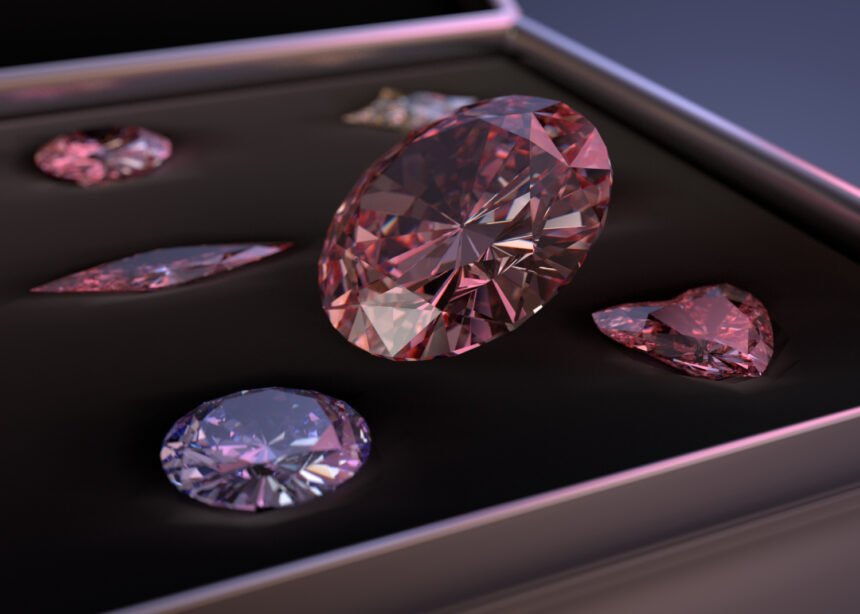Diamonds are typically associated with global centers like Antwerp, New York, or Hong Kong. Yet in recent years, Arizona has become an unexpected hotspot for diamonds changing hands at an astonishing rate. What makes Arizona so different? The answer lies in the state’s one-of-a-kind blend of cultural heritage, economic growth, and shifting consumer attitudes. Together, these forces have created what some describe as a modern-day diamond rush, where buyers, sellers, and jewelers converge in a thriving marketplace unlike any other in the country.
Arizona’s Cultural Foundations
Native American Influence
The roots of Arizona’s jewelry culture stretch back centuries. Native American tribes such as the Navajo, Hopi, and Zuni became renowned for their artistry in turquoise, silverwork, and intricate beadwork. While diamonds were not part of their traditional craft, this heritage of valuing natural stones and ornate craftsmanship laid the groundwork for Arizona’s appreciation of fine jewelry. Visitors and residents alike came to associate the region with authenticity, bold designs, and cultural significance, giving jewelry a deeper meaning than simple adornment.
This strong tradition of artisan jewelry continues today, with Native American craftsmanship influencing broader Southwestern aesthetics. Many Arizona jewelers combine modern designs with classic techniques, creating a unique market where diamonds are not just luxury items but also part of a living cultural narrative.
Southwestern Aesthetic and Identity
Beyond its Indigenous roots, Arizona’s identity is steeped in a broader Southwestern style that prizes vibrant colors, bold accessories, and a sense of individuality. Jewelry, particularly statement pieces, fits seamlessly into this cultural fabric. Diamonds, when paired with turquoise or set in contemporary designs, have become symbols of both luxury and regional identity.
The Southwestern lifestyle itself—sun-drenched landscapes, cowboy traditions, and desert mystique—naturally lends itself to jewelry that makes an impression. For many Arizonans, investing in diamonds isn’t just about wealth; it’s about embodying a sense of place and style that resonates both locally and globally.
Economic Conditions That Set the Stage
Population Growth and Wealth Influx
Arizona has been one of the fastest-growing states in the country for decades. According to U.S. Census data, Arizona’s population has grown by over 11% in just the past decade, with metro areas like Phoenix expanding at breakneck speed. A significant portion of this influx comes from California, bringing with it an affluent population seeking lower costs of living but still desiring luxury goods and investment opportunities.
This new wealth has fueled demand for high-end jewelry and diamonds. Affluent newcomers see Arizona not only as a place to settle but also as a hub to diversify their assets, making diamond purchases a blend of lifestyle and financial decision.
Tourism and Luxury Markets
Tourism is another powerful engine behind Arizona’s diamond market. The state welcomes more than 40 million visitors annually, many of whom flock to Phoenix, Scottsdale, and Tucson for shopping, fine dining, and cultural experiences. Luxury retailers and independent jewelers benefit directly from this influx, as tourists often view jewelry purchases as memorable keepsakes or long-term investments.
Scottsdale, in particular, has positioned itself as a destination for luxury shopping. Upscale malls, boutique jewelers, and private showrooms thrive in this environment, catering to both tourists and residents looking for exclusive pieces. Diamonds are at the heart of this trade, driving sales in a sector that thrives on trust, quality, and reputation.
Business-Friendly Environment
Arizona’s pro-business climate has also played a major role in the diamond rush. With relatively low taxes, fewer regulatory hurdles, and a strong entrepreneurial spirit, the state has attracted jewelers, investors, and resale businesses. Unlike some markets where high overhead costs or strict regulations can hinder growth, Arizona provides a more flexible environment that encourages innovation and competition.
This competitive marketplace benefits consumers by ensuring fair prices and diverse options, while also fueling a strong secondary market for pre-owned diamonds and jewelry.
The Diamond Market in Arizona
High Demand for Investment Jewelry
Diamonds in Arizona are not just seen as adornments—they’re increasingly viewed as investment vehicles. In an economic environment where inflation and real estate fluctuations can raise uncertainty, many people turn to tangible assets like precious stones. Diamonds offer portability, durability, and lasting value, making them especially appealing for Arizona’s financially savvy population.
This investment-driven demand has reshaped the marketplace. Buyers are looking beyond traditional retail channels, seeking out private jewelers, estate sales, and resale opportunities where they can secure fair market prices and reliable appraisals.
Scottsdale as a Luxury Epicenter
If Arizona has a diamond capital, it is unquestionably Scottsdale. Known for its affluence, golf resorts, and fine dining, the city has cultivated a reputation as a luxury epicenter. High-end jewelers and professional Scottsdale diamond buyers thrive in this environment, offering everything from rare diamonds to bespoke creations. Scottsdale’s clientele values discretion, quality, and expertise, which has pushed jewelers to develop strong reputations for trustworthiness.
Moreover, Scottsdale’s diamond market isn’t confined to retail. Private buyers, auction houses, and estate specialists all operate here, ensuring that diamonds circulate actively between generations, investors, and collectors. This high turnover is one reason Arizona stands out compared to other states.
Arizona’s Role in the Secondary Market
One of the most remarkable aspects of Arizona’s diamond rush is the booming secondary market. Many residents inherit jewelry from family members or choose to resell older pieces in order to upgrade or liquidate assets. This has created a robust ecosystem of resale opportunities, with jewelers, buyers, and private brokers facilitating transactions.
The economic shifts of the past decade—particularly rising living costs and financial uncertainty—have made resale markets even more attractive. For sellers, Arizona offers transparency and a competitive environment. For buyers, it provides access to high-quality diamonds at fair prices, often certified by trusted professionals.
Cultural and Economic Convergence: Why the “Diamond Rush” Emerged
What makes Arizona unique is the convergence of its cultural identity and economic dynamism. On one hand, its history of valuing craftsmanship and jewelry created a cultural backdrop where diamonds could flourish. On the other, its rapid population growth, tourism industry, and favorable business climate fueled the practical conditions for a thriving market.
Unlike traditional hubs such as New York, which is driven by global trade, or California, which often skews toward fashion and celebrity influence, Arizona has carved its own niche. Here, diamonds move fluidly between retail and resale, between personal identity and financial investment. The result is a diamond rush not defined by mining or discovery, but by circulation and cultural resonance.
Conclusion
Arizona’s diamond rush didn’t happen by chance. It is the product of deep cultural roots, economic vitality, and a population that values both tradition and innovation. The state’s unique culture made jewelry central to its identity, while its economy created the perfect conditions for a thriving diamond market. As more diamonds change hands in Arizona than ever before, the state proves that sometimes the most unexpected places can become the brightest beacons in the world of luxury.







